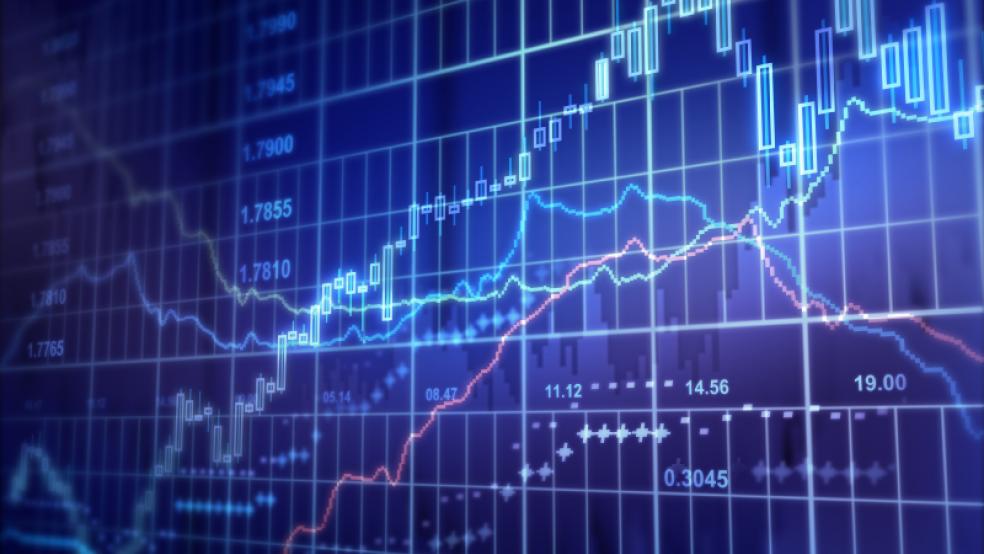Michael Lewis’s new book, Flash Boys, for all the hullaballoo surrounding it, isn’t the first time that high-frequency trading has been drawn to the attention of the world.
The use of computer algorithms in trading had its origins in the SEC’s decision to give its seal of approval to all-electronic exchanges in 1998. High-frequency trading was an unintended consequence. Probably only a tiny handful of computer traders and not even the most paranoid regulator could have imagined that less than two decades later they’d be struggling to come to grips with how the decision had permitted computer-driven models to dominate the world of stock trading.
Related: Let’s Do Something, Maybe, About High-Frequency Trading
That doesn’t mean the SEC hasn’t been aware of what has been going on in the last dozen years or more. In the run-up to the financial crisis, as high-frequency trading strategies gobbled up market share like Pac-Man run amok, the agency’s worker bees have been fielding complaints and inquiries about the changing landscape from all kinds of investors and traders.
For the most part, these were kept informal up until Senator Charles Schumer (D-NY) raised the stakes when he proposed that the SEC consider banning some kinds of high-speed trades, known as “flash” orders. Only months later came the “flash crash” — and the first major SEC inquiry into the phenomenon.
But if the trading is ultra-fast, the pace at which regulators have moved has been glacial. Part of the problem, as recently departed SEC chair Mary Schapiro noted ruefully, is that regulators simply didn’t have the kind of 360-degree oversight of the market that they need in order to understand what is going on.
Without that kind of information, knowing where the real problems exist and gauging which kinds of fixes will be effective (rather than simply being popular with other some traders) is difficult if not impossible. Doing something for the sake of being seen to act may not be that much better that doing nothing at all.
What Lewis’s book has accomplished is to ratchet up the momentum, both in the public debate and in the level of scrutiny of regulators. The four-year-old project at the SEC to build a trading data trail that would enable staffers to monitor the details of every single transaction — including those that occur outside the walls of public exchanges in so-called “dark pools” — hasn’t been making much headway.
One big problem might be the estimated cost: $1 billion. In FY 2013, the agency’s total budget was only $1.321 billion, and critics charge the SEC’s problems have nothing to do with being underfunded. Hmmm. Unsurprisingly, a contract to build the system has yet to be awarded.
Related: Ally Financial Signals Warning for IPO Investors
Into all of this mess has bravely waded New York Attorney General Eric Schneiderman. Instead of waiting for a complex computer monitoring system to cough up evidence that something might be amiss in the high-frequency trading universe, he’s fired off a set of subpoenas to half a dozen firms, demanding information about how they do business.
At first glance, it’s hard to see Schneiderman’s push as more than a fishing expedition by an activist attorney general — one who is surely aware that some of his predecessors forged their reputations by taking on larger and more established Wall Street firms than the likes of Chopper Trading LLC. (Go ahead: Ask the first 10 people you meet if they recognize the names Goldman Sachs or Morgan Stanley; then ask if they’ve ever heard of Chopper, Tower Research Capital LLC or Jump Trading LLC.)
In other words, Schneiderman — in dramatic contrast to the SEC, which is still standing around, wringing its hands — is making the momentum generated by Lewis’s book work to his advantage. He has long been aware of what’s afoot in high-frequency trading circles, and critical of the phenomenon. Whether he’s more motivated by the political advantages of jumping on board a suddenly high-profile cause or has realized that this is precisely the right time to start exerting some pressure, this may be the best chance any Wall Street cop has had in nearly a decade to rein in any excesses.
Related: The Real Threat Lurking Behind the Comcast-Time Warner Deal
The European Union is poised to go further still. As part of an overhaul of market rules, the European Parliament has revamped the law as it applies to for computerized stock trading as well. Over the next two and a half years, regulators will have to undertake the tortuous and complex process of writing new rules, policies and procedures for every part of the multi-trillion dollar securities markets covered by new law. (And we know all too well how smoothly that can go, thanks to the recent rule-making process in the United States with respect to implementing Dodd-Frank…)
Nonethless, it’s more momentum behind the push to act. The more jurisdictions publicly recognize that high frequency trading may be perilous not only to practitioners but to bystanders – and jeopardize the market as a whole – the more it puts the onus on the SEC to stop dithering.
Let’s just hope that the pressure of that momentum doesn’t swing too far in the opposite direction, and push U.S. regulators to act for the sake of acting. After all, it was just that kind of lack of forethought back in 1998 — the inability to foresee or understand the risks of the changes they were making to the trading system and guard against them in general (even if they couldn’t be expected to anticipate the specifics) — that has left us in our current pickle.
Top Reads from The Fiscal Times:



